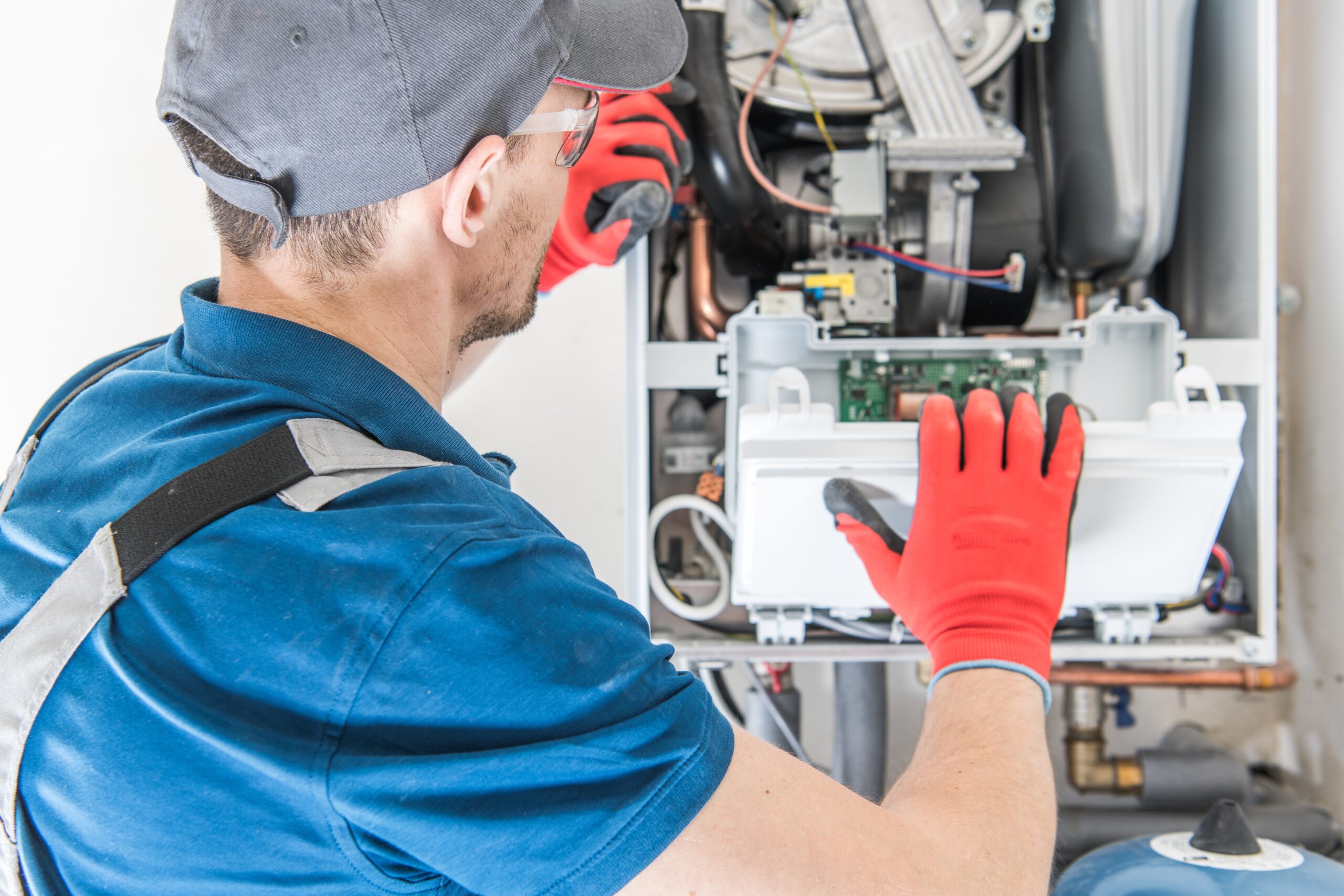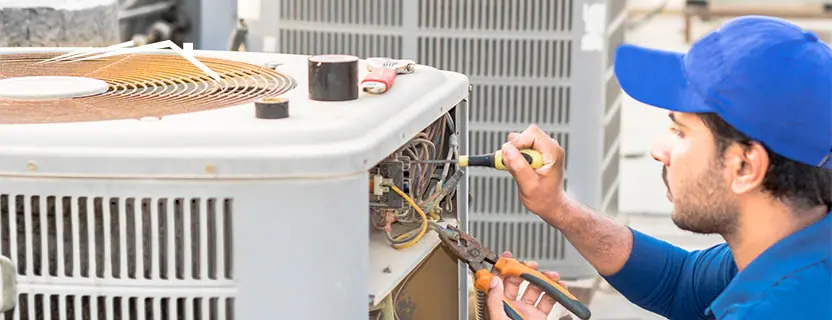The Best Ways to Improve Indoor Air Quality with ductless mini splits
Just How a Heatpump and Heating System Work With Each Other to Enhance Your Home's Heating Performance
Recognizing exactly how a heat pump and heater collaborate is essential for home owners seeking reliable home heating solutions. Each system has its strengths, giving a balanced approach to home convenience. The heatpump succeeds in modest temperatures, while the heater supplies fast warmth during extreme cold. This harmony not just decreases power expenses but likewise enhances the life expectancy of both appliances. What aspects influence this cooperation, and just how can homeowners optimize their benefits?
Comprehending Heat Pumps: Exactly How They Work
Although lots of people might be not familiar with their inner operations, heat pumps play a crucial function in modern-day heating unit. These devices operate by moving warmth from one location to one more, using the concepts of thermodynamics. In colder months, a heat pump essences heat from the outside air, ground, or water, and transfers it inside your home to warm the space. On the other hand, during warmer months, it can turn around the procedure, working as an ac system by getting rid of warmth from inside to the outside.Heat pumps are composed of an evaporator, compressor, condenser, and development shutoff. The refrigerant within the system takes in heat as it vaporizes at low temperatures and pressures. The compressor then boosts the pressure and temperature level of the cooling agent, allowing it to release warmth as it condenses. This reliable process can greatly reduce energy usage compared to typical heating methods, making warm pumps a lasting choice for climate control in homes.
The Duty of Heating Systems in Home Home Heating
Heating systems play a vital function in home heating by providing a reputable resource of warmth during the chillier months. They run by producing warm with combustion or electric resistance, distributing it throughout the home through ducts or glowing systems. The efficiency of a furnace is often measured by its Annual Fuel Usage Effectiveness (AFUE) rating, which suggests exactly how effectively the system converts gas into heat.Furnaces can use different energy resources, consisting of gas, gas, oil, or power, allowing property owners to pick the most suitable alternative for their needs. Unlike heatpump, which might struggle in extreme cold, furnaces maintain constant efficiency, ensuring that interior temperature levels continue to be comfortable despite exterior problems. Additionally, modern-day heaters frequently come equipped with sophisticated modern technology, such as clever thermostats and variable-speed blowers, enhancing their performance and responsiveness. This flexibility makes heating systems an important part in all-encompassing home heating techniques.

Benefits of Using Both Systems With Each Other
Incorporating the staminas of both heating systems and heatpump can result in a more reliable and effective home heating service. Using both systems enables house owners to make the most of the heatpump's power efficiency during milder temperature levels while counting on the heating system for more extreme cold problems. This double method can greatly reduce energy expenses, as warm pumps consume less electricity than traditional home heating techniques when temperatures are moderate.Additionally, using both systems together can boost convenience degrees in the home. Heatpump can provide constant, also heating, while heaters can swiftly raise ambient temperatures when required. Moreover, the combination of both systems can extend the lifespan of devices by decreasing damage on each system, as they share the workload. Inevitably, property owners can delight in a well balanced, cost-effective home heating service that adjusts effortlessly to differing climate condition, making sure a warm and inviting home throughout the winter season months.
Exactly How Warmth Pumps and Furnaces Enhance Each Other
They develop a complementary home heating system that optimizes performance and comfort when homeowners integrate heat pumps and furnaces. Warmth pumps operate by transferring heat from the outside air or ground, making them extremely reliable in modest environments. They succeed during milder temperature levels, providing affordable heating. Alternatively, furnaces generate heat through combustion or electric resistance, supplying solid, prompt heat during extreme cold conditions.The combination of these two systems allows for vibrant changes based upon temperature fluctuations. During warmer months or milder winter days, the heatpump can take the lead, preserving power and lowering prices. As temperature levels decline, the heating system can effortlessly engage, guaranteeing consistent heat throughout the home. This harmony not only optimizes power usage but also boosts the life-span of both systems, as each system runs within its suitable efficiency variety. Together, they develop a well balanced atmosphere that adapts to varying environment demands.
Optimizing Performance: Tips for Homeowners
House owners can improve their home heating effectiveness through several functional techniques. Establishing a normal maintenance routine, integrating clever thermostat innovation, and carrying out effective insulation and sealing remedies are vital actions. These measures not only improve convenience yet additionally decrease power expenses.
Normal Maintenance Set Up
To guarantee optimal home heating efficiency, developing a regular upkeep schedule is necessary for any home. Home owners ought to focus on routine assessments of both heatpump and heaters to ascertain peak performance. This consists of changing air filters every one to 3 months, as clogged filters can considerably reduce effectiveness. In addition, scheduling professional upkeep at the very least when a year permits specialists to recognize and address potential problems prior to they rise. Homeowners ought to also clean up the heatpump's outdoor unit to avoid debris accumulation that can prevent airflow. By sticking to a routine upkeep schedule, property owners not just improve their heating unit' effectiveness but also prolong their lifespan, leading to higher comfort and reduced energy expenses throughout the cooler months.
Smart Thermostat Integration
Incorporating a wise thermostat into a home heater can greatly improve energy navigate to this site performance, particularly as it allows for specific control over temperature level settings. These gadgets can discover the house owner's timetable and preferences, instantly readjusting the temperature level to enhance comfort while decreasing power use. For example, they can decrease heating during times when the home is empty, reducing unnecessary usage. Numerous wise thermostats also supply real-time energy use data, allowing home owners to make enlightened decisions about their home heating habits. Furthermore, remote access using smartphone applications permits customers to change setups from anywhere, guaranteeing the home is cozy upon return. Generally, smart thermostat integration not just enhances comfort however significantly contributes to energy savings and performance.
Insulation and Sealing Solutions
Smart thermostats play a vital duty in power effectiveness, however their effectiveness can be significantly improved by proper insulation and sealing solutions. Property owners ought to prioritize protecting wall surfaces, attics, and floors to lessen warmth loss. Premium insulation products, such as spray foam or fiberglass, can substantially enhance thermal resistance. In addition, securing voids around ducts, windows, and doors protects against cold air seepage and warmth getaway. Weatherstripping and caulking are efficient approaches for resolving these leakages - heat pump service. Routine assessments for air leakages, in addition to the use of blower door tests, can aid recognize issue areas. By purchasing insulation and securing, house owners can enhance the efficiency of their heating systems, inevitably causing reduced energy intake and reduced utility expenses
Common Myths Concerning Warmth Pumps and Furnaces
What misunderstandings border warm pumps and heating systems? Many people mistakenly think that warm pumps are inefficient in colder climates. Actually, contemporary heat pumps are made to operate efficiently also in reduced temperatures, providing reliable home heating throughout winter months. Another usual misconception is that heating systems are always extra reliable than heatpump. Nevertheless, this depends on the certain energy sources and performance scores of the units concerned. Some might also believe that using both systems simultaneously is unneeded, but as a matter of fact, this combination can optimize heating performance, especially throughout severe weather. Furthermore, people commonly assume that heatpump call for constant maintenance, when actually, they have similar maintenance requires to conventional home heating systems. By debunking these myths, home owners can make more informed choices concerning their home heating options, eventually bring about improved comfort and energy performance in their homes.
Upkeep Considerations for Combined Solutions

Regularly Asked Questions
Can Warm Pumps Job Properly in Incredibly Cold Climates?
Heatpump can struggle in incredibly chilly environments as a result of reduced effectiveness and warm removal constraints. Improvements in modern technology have led to models made for far better efficiency in such problems, boosting their stability in harsh environments.
How Much Time Do Warm Pumps and Furnaces Normally Last?
Heatpump typically find out here now last 15 to twenty years, while heaters have a life expectancy of 15 to 30 years. Routine maintenance can extend their longevity, making sure effective procedure and reducing the requirement for premature replacements.

What Is the Ordinary Cost of Putting Up Both Solutions?
The ordinary cost of mounting both a heatpump and a heating system generally varies between $5,000 to $10,000 - heat pump replacement ooltewah tn. Elements affecting this cost include system dimension, installment complexity, and local labor prices
Are There Tax Motivations for Using Energy-Efficient Heating Equipments?
Many house owners make inquiries about tax motivations for energy-efficient heating unit. Various federal and state programs usually offer rebates or credit scores, encouraging the adoption of lasting modern technologies to lower power usage and promote environmental obligation.
Exactly how Do I Choose the Right Size Heat Pump and Heater?
Picking the appropriate size heatpump and furnace includes determining the home's square video footage, thinking about insulation high quality, and reviewing neighborhood environment. Consulting a specialist can assure ideal system performance and energy efficiency based on specific needs. furnace replacement. Comprehending just how a warmth pump and furnace work with each other is vital for house owners seeking efficient heating remedies. In cooler months, a warm pump essences heat from the outdoors air, ground, or water, and transfers it inside to heat the living area. When homeowners incorporate warmth pumps and heating systems, they create a corresponding home heating system that makes best use of performance and comfort. Warm pumps operate by transferring warmth from the outside air or ground, making them highly reliable in moderate climates. Warm pumps can have a hard time in extremely cool climates due to reduced performance and warm removal restrictions